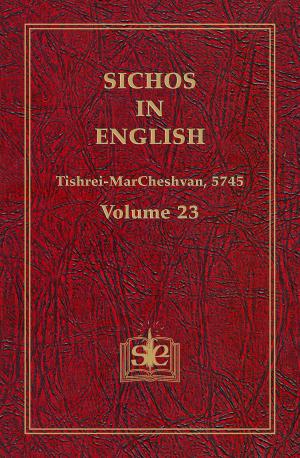The Making of Chassidim
Nonfiction, Reference & Language, Reference, Genealogy, Religion & Spirituality, Judaism| Author: | Sichos In English | ISBN: | 9781465985781 |
| Publisher: | Sichos In English | Publication: | September 8, 2011 |
| Imprint: | Smashwords Edition | Language: | English |
| Author: | Sichos In English |
| ISBN: | 9781465985781 |
| Publisher: | Sichos In English |
| Publication: | September 8, 2011 |
| Imprint: | Smashwords Edition |
| Language: | English |
(A translation of a letter sent by the Rebbe Rayatz to his daughter, Rebbetzin Chayah Mushka)
Pirkei Avos teaches: “Know from where you came.” An awareness of our people’s roots in the past tells us much about defining our direction in the future. As we probe the inner challenges and struggles which they underwent in previous eras, we discover how to tap those same resources of personal growth and express them in our contemporary settings.
“The Making of Chassidim” describes the motivating factors which spurred several of the more prominent early Chassidim to adopt this way of life. It recounts their personal spiritual strivings, the love and fellowship they shared, their longings, and their joys. In doing so, it chronicles the revolution Chassidism wrought within the Jewish community.
True - the Baal Shem Tov did not change the external situation of our people, but he changed the internals. From his revelation of Chassidism onward, the Jewish pulse beat to a different rhythm - one with more energy, joy, and depth.
And this is not merely history. The insights we can glean from this chronicle give every person the spiritual resources to work such a revolution within his own personal setting.
(A translation of a letter sent by the Rebbe Rayatz to his daughter, Rebbetzin Chayah Mushka)
Pirkei Avos teaches: “Know from where you came.” An awareness of our people’s roots in the past tells us much about defining our direction in the future. As we probe the inner challenges and struggles which they underwent in previous eras, we discover how to tap those same resources of personal growth and express them in our contemporary settings.
“The Making of Chassidim” describes the motivating factors which spurred several of the more prominent early Chassidim to adopt this way of life. It recounts their personal spiritual strivings, the love and fellowship they shared, their longings, and their joys. In doing so, it chronicles the revolution Chassidism wrought within the Jewish community.
True - the Baal Shem Tov did not change the external situation of our people, but he changed the internals. From his revelation of Chassidism onward, the Jewish pulse beat to a different rhythm - one with more energy, joy, and depth.
And this is not merely history. The insights we can glean from this chronicle give every person the spiritual resources to work such a revolution within his own personal setting.















